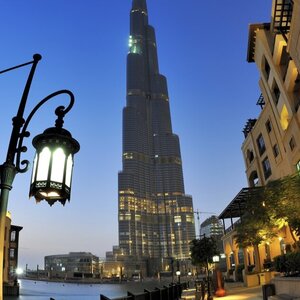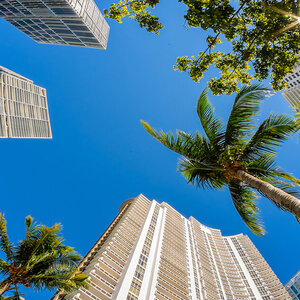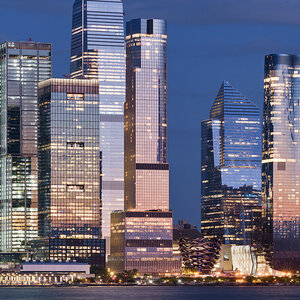The WPJ
THE WORLD PROPERTY JOURNALReal Estate Facts Not Fiction
Vacation Real Estate News

Middle East Hotels Post Mixed Results in Q1, Africa Posts Solid Gains
Vacation News » Doha Edition | By Monsef Rachid | April 24, 2018 8:09 AM ET
According to STR, hotels across the Middle East reported mixed Q1 2018 performance results, while hotels in Africa posted growth across the three key performance metrics.
Key Q1 Hotel Highlights Include:
- Egypt posts best Q1 occupancy since 2010
- South Africa off to slow start in 2018; water crisis affects Cape Town performance
- United Arab Emirates registers higher occupancy, lower rates
Based on U.S. dollar currency for Q1 2018 vs. Q1 2017, below are the following region's individual performance results:
Middle East
Occupancy: +0.9% to 70.6%
Average daily rate (ADR): -4.5% to US$163.76
Revenue per available room (RevPAR): -3.7% to US$115.62
Africa
- Occupancy: +5.2% to 58.9%
- Average daily rate (ADR): +6.6% to US$125.18
- Revenue per available room (RevPAR): +12.1% to US$73.73
Local currency, Q1 2018 vs. Q1 2017
Egypt
- Occupancy: +21.2% to 60.1%
- ADR: +11.8% to EGP1,291.72
- RevPAR: +35.5% to EGP775.69
Performance recovery continued in Egypt, and the absolute occupancy level was the highest for a first quarter in the country since 2010. The year-over-year RevPAR increase was supported by both the Sharm El Sheikh (+84.9%) and Cairo/Giza (+14.7%) markets, and STR analysts expect this boost to continue as Russia recently resumed flights to Egypt after a two-year suspension.
South Africa
- Occupancy: -3.3% to 63.1%
- ADR: +2.6% to ZAR1,361.30
- RevPAR: -0.7% to ZAR858.99
STR analysts note that the slow start to the year for South Africa was in part due to supply growth (+2.2%). A recent analysis from STR showed that supply growth in the Luxury segment is leveling off. At the market-level, Cape Town reported an 8.9% Q1 decrease in occupancy. That decline was steeper in March specifically (-12.3%). STR analysts believe that the negative performance was influenced by the water crisis in the city. The announcement of "day zero" would have likely deterred international tourists, who would have had to book trips multiple months in advance. Johannesburg, on the other hand, saw a 2.5% increase in occupancy for the quarter. That, coupled with a 5.1% lift in ADR, pushed the market's RevPAR growth to 7.8%.
United Arab Emirates
- Occupancy: +1.1 to 83.4%
- ADR: -3.4% to AED666.48
- RevPAR: -2.3% to AED556.12
Healthy demand growth (+5.2%) was enough to outpace continued significant supply growth (+4.0%) in the emirates, leading to an increase in occupancy while mitigating the supply impact on rate levels. Key markets Abu Dhabi (RevPAR: -4.0%) and Dubai (RevPAR: -2.6%) each saw overall performance declines. STR analysts note that the supply growth impact is more substantial in Dubai ahead of Expo 2020, while Abu Dhabi is looking to diversify away from its oil dependence and focus on more development in the tourism sector.
Sign Up Free | The WPJ Weekly Newsletter
Relevant real estate news.
Actionable market intelligence.
Right to your inbox every week.
Real Estate Listings Showcase
Related News Stories
Vacation Real Estate Headlines
- Record 71 Million Americans Traveling Over July Fourth Week
- Major Hotel Operators Expanding Rapidly Across Asia Pacific in 2024
- 44 Million Traveling Memorial Day Weekend, Second Most in History
- South Korea is Asia Pacific's Top Performing Hotel Market
- Florida Dominates Top 10 U.S. Cities List to Invest in Short Term Rentals
- Investment in South Korea Hotels Dipped in 2023
- European Hotel Values Still Below Pre-Covid Prices
- Over 115 Million Americans Traveling Over Christmas Holidays
- 55.4 Million Americans on the Move Thanksgiving Holiday
- Asia Pacific Tourism to Approach Full Recovery in 2024, Driving Hotel Sector Growth
- Asia Pacific Hotel Revenues to Rise in 2024 Despite Economic Volatility
- Tourist Bookings to Hawaii Down 50 Percent Since Maui Wildfires
- Demand for Vacation Homes in U.S. Hit 7-Year Low in August
- International Travel for Americans Jumps Over 200 Percent in 2023
- U.S. Labor Day Weekend Travel To Uptick in 2023
- Asia Pacific Hotel Investment Collapses 51 Percent in 2023
- As Summer Travel Season Winds Down, U.S. Gas Prices Rise Again
- Record Setting 50.7 Million Americans to Travel This July Fourth Holiday
- Israel Hotels Poised for Growth as International Visitors Set to Return
- Over 42 Million Americans to Travel This Memorial Holiday Weekend
- European Hotel Transactions Decline 18 Percent in 2022 as Interest Rates Surge
- U.S. Vacation Home Demand Dives 50 Percent from Pre-Pandemic Levels
- European Hotel Values Upticked 3 Percent in 2022
- U.S. Vacation Rental Bookings Rise 27 Percent Annually in January
- Third-Party Hotel Operators Set to Increase Across Europe in 2023
- 113 Million People Traveling in the U.S. During the 2022 Holiday Season
- London Hotels Set to Weather High Inflation in 2022
- Almost 55 Million People to Travel This Thanksgiving Holiday in America
- Düsseldorf Hotels Enjoy Growing Corporate Demand in 2022
- Global Hotel Investment Activity in Asia Pacific to Rise 80 Percent in 2022
- Japan Lifts Foreign Inbound Covid Travel Restrictions in October
- Demand for Second Vacation Homes in the U.S. Decline
- Amsterdam Hotels Enjoy Comeback Post Covid Travel Restrictions
- 47.9 Million Americans Will Travel This July 4th Weekend
- High Prices, Rising Rates, Economic Uncertainty Ends Vacation Home Boom in America
- My Top 3 July Fourth Vacation Getaways in America Revealed for 2022
- Post Covid, New York City Hotel Market on the Road to Recovery
- Fast Rising Gas Prices to Impede U.S. Vacation Travel in H2 of 2022
- Post-Covid, Paris Hotel Sector Set for Strong Recovery as Demand Grows
- Singapore Hotel Demand to Accelerate in Late 2022
Reader Poll
Marketplace Links
This website uses cookies to improve user experience. By using our website you consent in accordance with our Cookie Policy. Read More





